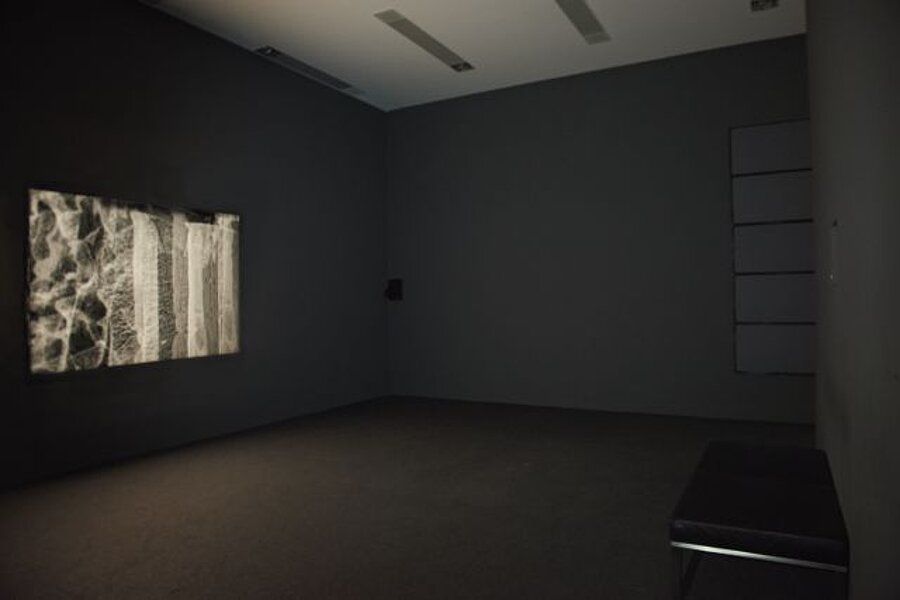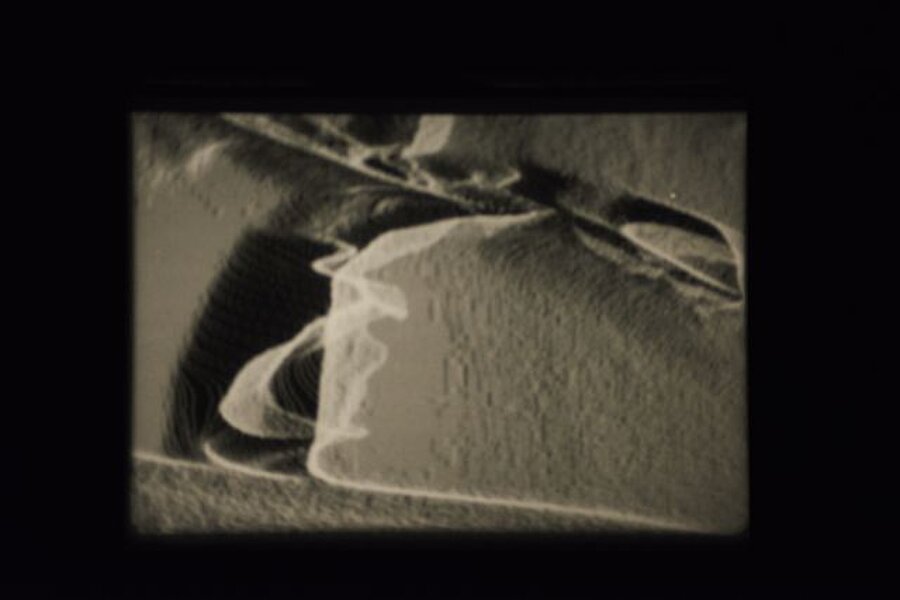
Wardill, Emily
The Palace
2013
| Object description | 16mm film, b/w, optical sound, 7 min 22 sec |
|---|---|
| Object category | Medien-Video |
| Year of acquisition | 2014 |
| Inventory number | AV 239/0 |
| Creditline | mumok - Museum moderner Kunst Stiftung Ludwig Wien |
| Rights reference | Wardill, Emily |
| Further information about the person | Wardill, Emily [GND] |
The visual imagery of "The Palace" is indistinct. The film depicts what appears to be an architectural surface, but neither scale nor context can be perceived. It is reminiscent of images produced by an electron microscope—desaturated, yet alarmingly acute in its rendering of high-contrast detail. The surfaces oscillate in and out of focus, a topography of bright ridges and murky troughs that never resolves itself into a clear representation of material constitution. Such rendering is indicative of digital imaging, the collation of points of measured data processed by a form of computation that imitates or abstracts a real physical process. Projected through the medium of film, the images suggest a simultaneous expansion and contraction, as the digital assumes the physical demeanor of the analogue, and the analogue projects the aesthetic of the digital. "The Palace" pairs these images with a voice-over in which a man narrates episodes from his life. In keeping with the lack of clarity in the images, the experiences he relates are indistinct in the information they provide, dwelling on psychological and perceptual states in which concrete particulars become clouded. The narrative begins with the retelling of an exchange with a woman, possibly his partner, as he attempts to comprehend her experience of monochromacy, a form of near-total color blindness. He goes on to speak of having been a foreign aid worker, implying that this was a front for intelligence gathering: The job required him to memorize large amounts of information—on geography, governments, the “authorities in charge.” He describes his use of “memory palaces,” a mnemonic technique involving the visualization of a concrete space and the assignation of architectural features to correspond to pockets of information. The visual content of "The Palace" collapses the two forms of cognitive plasticity described in the voice-over: That of impaired vision and its impact on subjectivity, and the deliberate abstraction of the memory palace, constructed with the aim of extending neurological capacity. The near-monochromatic digital space shown in the film is one of matter, mediated through an abstraction—a compression algorithm—in which data is lost. Yet equally it approximates the selectivity of a process in which the need to remember, to create a workable means of retaining large amounts of information, centers around imaging an equivalence between physical forms and abstract information. As the blurring of altruism and mimicry in the identity of the foreign aid worker and spy suggests, the film speaks to the idea of a mind commandeered by fabrications, as the brain itself sculpts neurological pathways that conjoin the production and perception of meaning and form.
© mumok – museum moderner kunst stiftung ludwig wien










